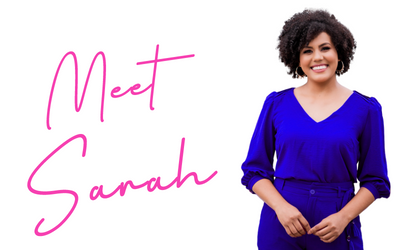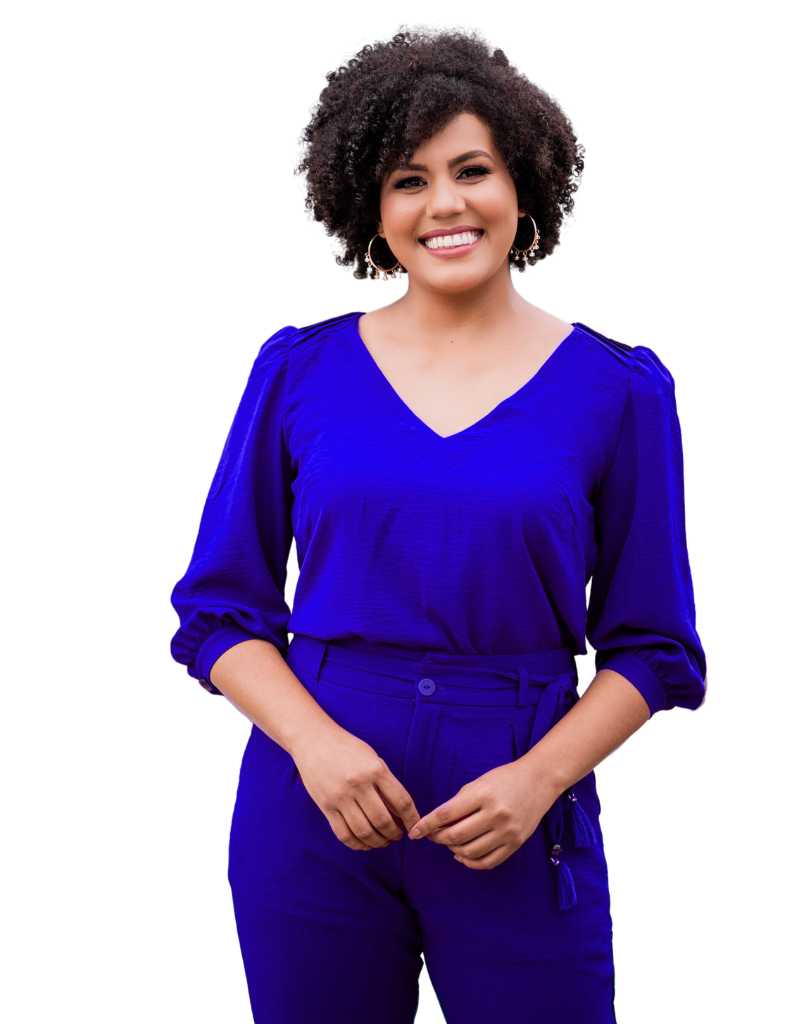Navigating the nuances of professional communication in our modern world can be tricky, especially when it comes to addressing women in business letters or emails.
We all know that making a positive first impression is key. Whether you’re reaching out to a potential client, a new colleague, or a seasoned executive, the way you address them can set the tone for your entire relationship moving forward.
As a successful personal development and business coach, I’ve seen my fair share of communication faux pas. It’s all about striking the perfect balance between professionalism and warmth.
Let’s dive into the art of crafting respectful and engaging salutations that resonate with the women you’re communicating with.
The Importance of Properly Addressing Women
When drafting a business letter or email, one question that often arises is how do you address a woman in the context of professional correspondence.
It’s not just about using the right title or salutation; it’s about making a strong, positive first impression. In the digital age where emails can sometimes feel impersonal, getting the address right can set the tone for a respectful and engaging dialogue.
Addressing a woman correctly in a business letter or email is critical for several reasons.
Firstly, it demonstrates attention to detail.
When I take the time to verify the preferred title or pronoun, it shows that I value the person on the other side of the email. This level of care can significantly impact the way my message is received and perceived.
Another crucial aspect is conveying respect.
Whether it’s “Ms.”, “Mrs.”, or a professional title like “Dr.”, the correct salutation honors the recipient’s identity and position. It’s an acknowledgment of their achievements and status, which is fundamental in professional settings. Addressing someone properly is a basic yet powerful form of recognition and respect.
Furthermore, using the proper form of address in business communications fosters inclusivity. It signals that I’m aware of and sensitive to gender identities and roles, which is increasingly important in today’s diverse corporate landscape. It’s about showing that I’m not just conducting business; I’m also contributing to a culture of inclusivity and respect.
Understanding how to address a woman in a business letter or an email is not just about following etiquette. It’s about building rapport, demonstrating professionalism, and fostering a culture of respect and inclusivity.
By taking the time to address someone correctly, I’m laying the groundwork for positive and productive professional relationships.
How to Address Women in Business Communication
When it comes to drafting a business letter or email, knowing how to address a woman properly is crucial. I’ve learned that this practice not only reflects my professionalism but also shows respect and inclusivity.
Here’s what I consider essential guidelines on addressing Women in Emails or Letters.
Use a Respectful Title and Salutation: Whether it’s a business letter or email, the title and salutation set the tone. If I’m aware of the woman’s preferred title, I’ll use that. Otherwise, “Ms.” is my go-to choice as it’s respectful and neutral, regardless of marital status. For instance, “Dear Ms. Smith,” is a safe and professional way to start.
Confirming the Recipient’s Preference: In an era where personal identity holds great significance, confirming how a woman prefers to be addressed is key. If there’s an opportunity, I’ll ask directly or research through professional platforms like LinkedIn. This small step can make a big difference in establishing respectful communication.
Professional Titles and Academic Achievements are Critical: When a woman holds a professional title or has notable academic achievements, acknowledging these in the salutation emphasizes respect for her accomplishments. Titles such as “Dr.” or professional accolades like “CPA” should be used when applicable. For example, “Dear Dr. Johnson,” or “Dear Jane Doe, CPA,” directly acknowledges their hard work and status.
Inclusivity is Paramount: Above all, I ensure my language promotes inclusivity. This means avoiding assumptions about roles, titles, or marital status unless I have definitive information. The goal is to communicate in a way that is considerate of all recipients and their unique identities.
In my experience, adhering to these guidelines not only enhances professional communication but also contributes to a respectful and inclusive business environment. It’s about recognizing the individual and their professional identity, ensuring that my message is both respectful and engaging from the outset.
Using Professional Titles and Honorifics
When I’m tasked with addressing a woman in a business letter or email, I always pay close attention to using professional titles and honorifics correctly. It’s not just about formality; it’s about respect and recognition of her achievements and status. Whether it’s Dr., Prof., Ms., or another title, getting it right can set a positive tone for the entire correspondence.
First off, Ms. has become a go-to honorific when I’m unsure of marital status or when it’s irrelevant to the context. It’s a safe and respectful option that avoids any unintended implications. However, when a woman has a professional or academic title, I prioritize that. Titles like Dr., Prof., or any industry-specific accolade should always take precedence. They acknowledge the hard work and dedication it takes to earn these distinctions.
I’ve found that the key to addressing a woman effectively in a business email or letter lies in doing a bit of homework. A quick LinkedIn search or a glance at the company website can reveal if she holds a specific title. When in doubt, I don’t hesitate to ask directly. It’s a simple step that shows I value her identity and professionalism.
Here’s a quick reference table I use to ensure correctness:
| Situational Context | Honorific | Example |
|---|---|---|
| Unknown marital status | Ms. | Ms. Smith |
| Medical or academic | Dr. | Dr. Johnson |
| Academic (university level) | Prof. | Prof. Davis |
| Legal profession | Esq. | Jane Doe, Esq. |
Using the correct title is more than just proper etiquette; it’s a fundamental part of professional communication that demonstrates respect and consideration.
While addressing a business email or letter, I always remember that the small detail of correctly using titles and honorifics can make a significant difference in how my message is received.
Avoiding Common Mistakes in Communication
When it comes to addressing a woman in a business letter or email, I’ve noticed several pitfalls that can inadvertently occur, diminishing the professionalism of the correspondence. Drawing from my experience, I want to highlight key mistakes to avoid, ensuring your communication remains respectful and professional.
First and foremost, assuming marital status can lead to errors in addressing. Terms like “Mrs.” are often incorrectly used without knowing the preference or marital status of the woman involved. To circumvent this, I always opt for “Ms.” unless the person has specifically indicated another preference. This approach respects their identity without making unwarranted assumptions.
Another common mistake I’ve encountered. involves neglecting to use professional titles. Women in professional settings, especially those with significant academic or professional achievements, may prefer to be addressed by their titles, such as Dr. or Prof. Ignoring these titles can be perceived as disrespectful. I make it a point to conduct thorough research before sending out any business communication to determine the correct title to use.
Additionally, a mistake often made is over-familiarity in the opening of a business email or letter. While “Hey” or “Hello” might work in informal settings, in a business context, it’s crucial to display a level of formality and respect. I find that starting with “Dear” followed by the appropriate title and surname strikes the right balance between formality and warmth.
To avoid these and other common communication errors, here are a few practical tips:
- Always research to verify the recipient’s preferred title and name spelling.
- Use “Ms.” as a default salutation when in doubt about marital status.
- Include professional titles where applicable.
- Maintain a formal tone in the opening of the correspondence.
By keeping these guidelines in mind, I ensure that my business letters and emails respect the person’s identity and professional stature, facilitating smoother and more respectful business communication.
Crafting Personalized and Engaging Salutations for Women
When it comes to crafting the perfect opening for a business letter or email, I’ve learned that personalization can make a significant difference.
Addressing a woman in a business letter or email might seem straightforward, but it’s all about striking the right balance between professionalism and personal touch. I always prioritize using titles and last names unless explicitly told otherwise. This approach underscores respect and acknowledges the professional stature of the individual I’m communicating with.
For me, the key to mastering how you address a woman in a business letter or email lies in paying close attention to the details. If I’m aware of a woman’s professional title, such as Dr. or Prof., I make sure to include it in my salutation. This not only conveys respect but also personalizes the message, making it more engaging.
In cases where I’m unsure about the correct title or when the recipient has a notable achievement, I’ll do a quick research or double-check their LinkedIn profile. It’s a small step that goes a long way in personalizing communication.
Another point I’ve discovered is the importance of avoiding assumptions about marital status. Opting for “Ms.” as a default salutation is my go-to unless I have information suggesting another preference. It’s a universally respectful approach that sidesteps potential awkwardness.
I also pay attention to the tone of my email or letter. It’s crucial to keep it professional yet warm. Starting with a friendly, personalized greeting sets a positive tone for the rest of the communication. For example, “Dear Ms. Smith,” immediately acknowledges the recipient’s professionalism while also making the salutation specific to her.
By focusing on these aspects, I ensure my business communications are not only respectful and professional but also engaging. It’s all about showing genuine respect for the recipient’s identity and achievements right from the start.
Conclusion
Mastering the art of addressing women in business letters or emails is crucial for making a lasting impression. I’ve shared insights on the importance of personalized, respectful, and professional salutations. Remember, using “Ms.” unless otherwise specified, and acknowledging professional titles showcases your attention to detail and respect for the recipient’s identity.
A warm, engaging start to your correspondence can pave the way for successful business relationships. Keep these tips in mind, and you’ll navigate the nuances of business communication with ease and confidence.
Frequently Asked Questions
Why is it important to personalize salutations in business communication?
Personalizing salutations shows respect and appreciation for the recipient’s identity and achievements. It sets a professional and engaging tone for the communication, reflecting that you have taken the time to acknowledge them personally.
How should you address a woman in business emails if you know her professional title?
If you’re aware of a woman’s professional title, such as Dr. or Prof., you should use it along with her last name (e.g., Dr. Smith) in your salutation. This acknowledges her accomplishments and shows respect.
What salutation should you use if you’re unsure of a woman’s marital status?
When uncertain about a woman’s marital status, it’s appropriate and respectful to use “Ms.” followed by her last name (e.g., Ms. Smith). This title avoids assumptions about her personal life.
How can a personalized greeting impact the tone of business correspondence?
A personalized greeting can significantly impact the tone of business correspondence by making it feel more warm and friendly. This initial personal touch can set a positive tone for the entire communication, fostering a more engaging and respectful exchange.
Why is it crucial to avoid assumptions in addressing women in business communications?
Avoiding assumptions in addressing women ensures that communications are respectful and inclusive. It acknowledges the recipient’s professional identity without making personal assumptions about their marital status or preferences, fostering a more respectful and professional interaction.



